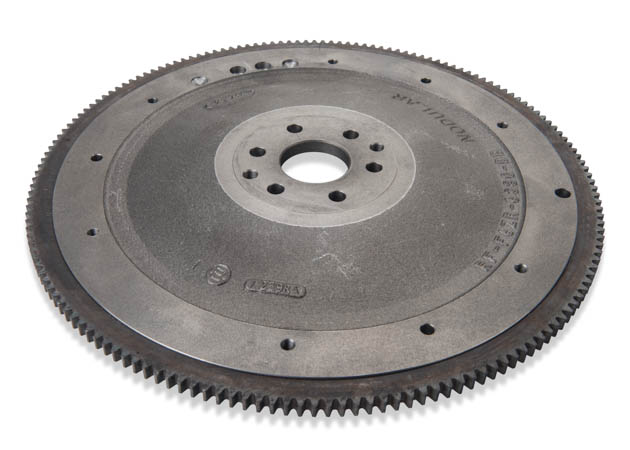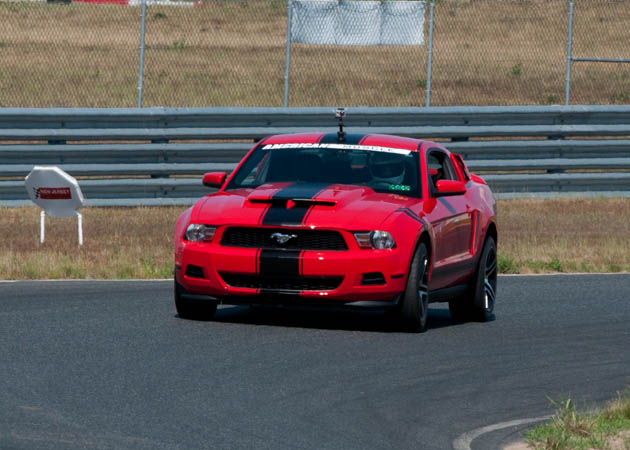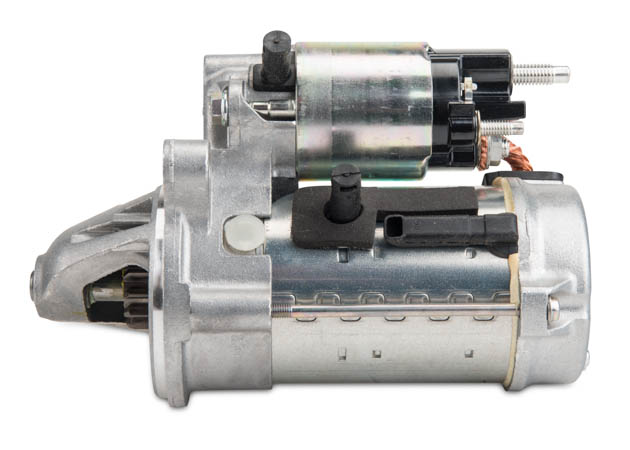If your Mustang requires a new clutch why not upgrade your flywheel at the same time? You have many, many options available for your New Edge Mustang so grab a new, upgraded flywheel.
Shop '99-'04 Mustang Flywheels
If you're replacing your Mustang's clutch, you are going to want to grab a new flywheel as well. Upgrade from your current flywheel while choosing from the top brands in the industry.
Shop Flywheels
What Does A Mustang's Flywheel Do?
- Flywheel takes the rotational energy of your Mustang’s engine and transfers it to the rest of the drivetrain
- Stock flywheels are iron to have more inertia (less engine braking), but lighter flywheels make your engine rev faster
- Daily driven Mustangs benefit from a slightly lighter flywheel, but not as light as they can go
- Race only ‘Stangs should go all the way with an aluminum flywheel
- Don’t forget the starter teeth engage the flywheel, so make sure your new one matches your starter
A flywheel is a large circular plate that is installed on the back of an engine on cars equipped with manual transmissions. The flywheel is used as a surface for the friction material of a clutch disc to ride. Clutch discs are clamped between the clutch pressure plate and the flywheel.
As the flywheel turns, it rotates the clutch disc and transmits power to the transmission. The flywheel needs to have a clean, fresh surface when installing a new clutch.
Much like brake rotors, it needs this clean surface to properly bed the clutch for optimal operation. Some people choose to resurface their stock flywheels, but now is a good time to replace that heavy factory flywheel with something lighter!
Mustang Flywheels and Rotational Mass
Stock flywheels are made from iron, and this heavy flywheel will drag the engine down because it takes more energy to get it rotating. The lighter you can make any parts that rotate, the faster the engine will be able to rev up, getting you into your power band sooner.
By switching from an iron flywheel to a lightened steel or aluminum flywheel, you will be able to make your engine rev more quickly. Stock flywheels weigh around 20-25 pounds and installing a steel or aluminum flywheel will allow you to drop about 10 pounds of rotating mass!
Should I Swap my Mustang's Flywheel When Changing Clutches?
- Flywheel upgrades are highly recommended to complement the purchase of a new clutch
- A new flywheel will ensure the best engagement possible from your new setup
- It is recommended in many cases to match your new clutch and flywheel by brand
- The construction material of your flywheel—steel or aluminum—is largely based on your intentions and future plans for the car
Flywheels are a highly recommended upgrade to complement the purchase of a new clutch, but they’re often seen as not necessary by consumers. The truth is very much the opposite - a new flywheel will ensure you’re going to get the best engagement possible from your new setup. It will give the clutch a fresh new surface to grab rather than one that’s resurfaced, and had been used for the last 20 thousand miles plus. Replacing the flywheel when you swap out your clutch components is fairly simple and is without question worth the added peace of mind and extra performance!
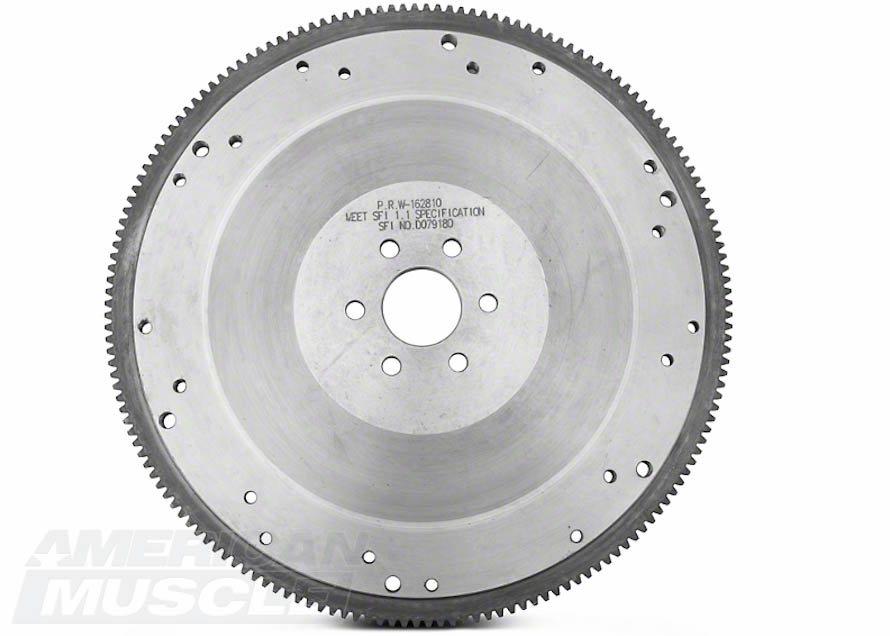
6-Bolt Flywheel for 1996-1998 GTs and Late 2001-2010 GTs
Should I match my Mustang’s clutch and flywheel by brand?
Most companies design their flywheels and their clutches to be used in conjunction with one another. They are machined to precise tolerances to ensure precise engagement, optimum grip, and the prevention of any premature failure. We highly recommend matching your clutch brand to its respective flywheel for the best results (i.e. Exedy clutch with Exedy flywheel).
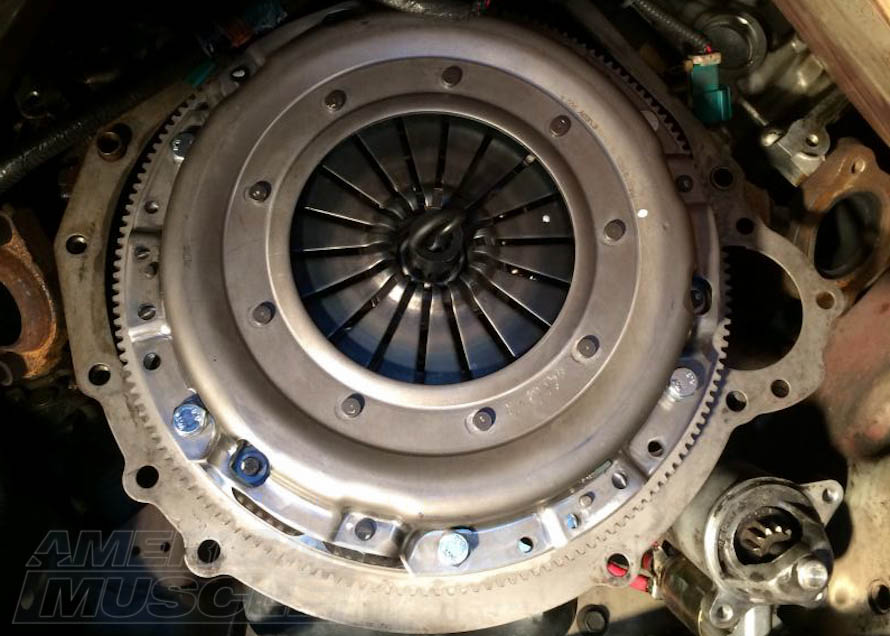
Stage 1 Clutch Installed
Which is a better flywheel material for a Mustang; steel or aluminum?
Flywheels are available in one of two materials: steel or aluminum. Deciding which route to take will be based largely on your intentions for your Mustang. For a daily driven or slightly modified Mustang, you can’t go wrong with either choice. Steel is a direct factory replacement and is what most people choose for their daily driver due to its durability.
Steel flywheels typically weigh about 15 pounds and aluminum flywheels weigh around 12 pounds. Lighter flywheels will take some getting used to. They rev up much quicker, so less throttle input is required to get to your desired RPM.
They also make it more likely that the engine will stall, but by increasing the cars idle RPM and using a careful foot, you will be able to adapt to the lightened driveline. Stock flywheels will make daily driving easier compared to steel or aluminum, but the steel or aluminum flywheel will make your car accelerate quicker.
The aluminum offers the greatest reduction in parasitic drag, but will the trickiest to drive in traffic. If you have a Mustang that you daily drive or drive mainly on the street, a steel flywheel would be the best option for you.
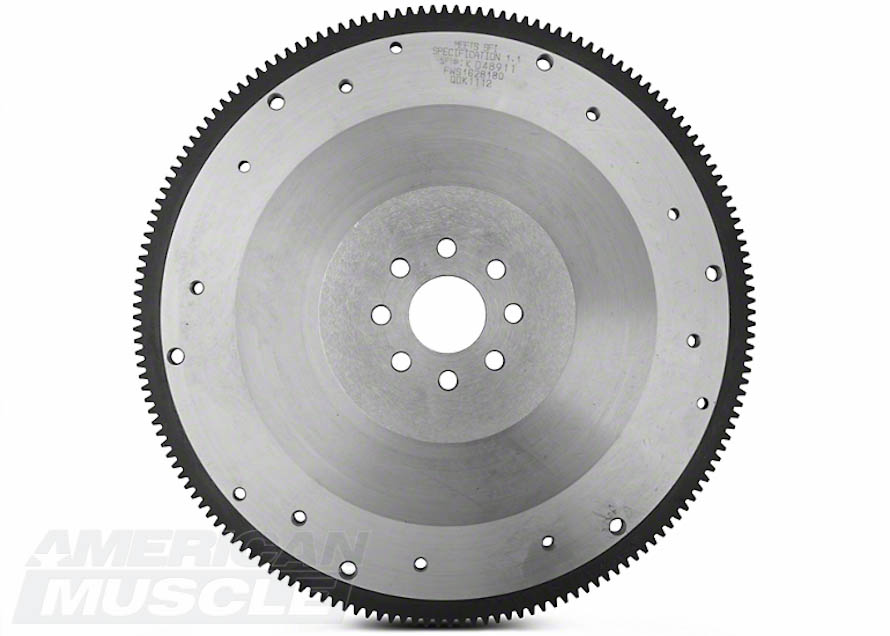
Billet Steel 8-Bolt Flywheel for 1999 to Mid-2001 GTs, 1996-2004 Cobras, and Mach 1s
What flywheel will give my Mustang better performance, steel or aluminum?
Since the steel has a heavier rotating mass, the weight helps the motor start spinning easier and quicker at lower RPMs. This makes daily driving easier on both your left foot and the engine. The aluminum flywheel is typically a better option for Mustangs that make power in the higher RPM ranges. With its lighter rotating mass, it’s able to rev faster which puts the car into its power band faster.
Be careful when placing your order, and be sure to order the proper flywheel for your year/model Mustang. One way to know for sure is determine which engine/trans combination you have.
- Valve Cover with 11 bolts and a T45 trans (check trans type on your door sticker. If the first digit is a 6 you have a T45 trans): 6 bolt flywheel
- Valve Cover with 11 bolts and a T3650 trans (If the first digit on the door sticker is a K you have a T3650 trans): 6 bolt flywheel
- Valve Cover with 13 bolts and a T45 trans: 8 bolt flywheel
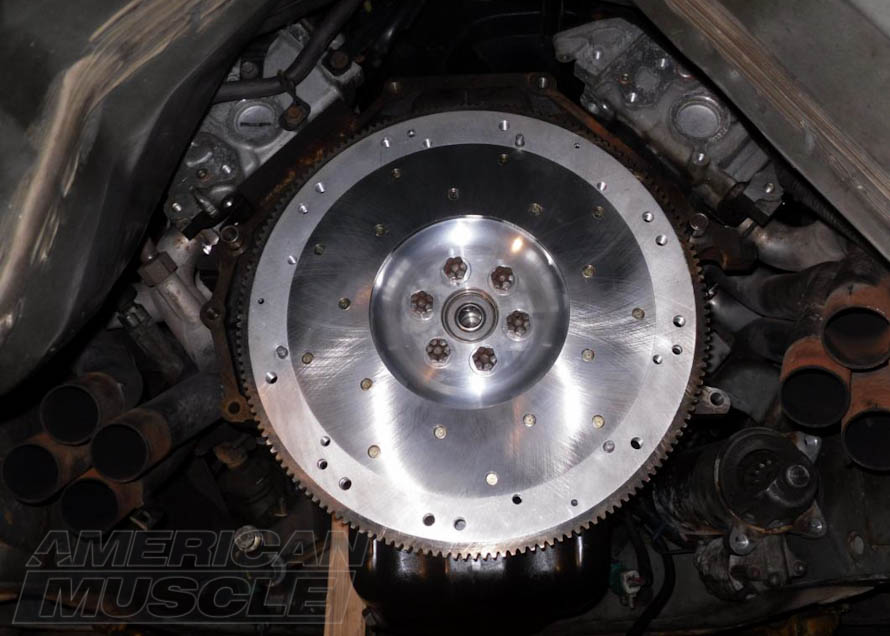
Billet Aluminum 6-Bolt Flywheel for 1996-1998 GTs, and Late 2001-2010 GTs
| Steel Flywheel Pros |
Aluminum Flywheel Pros |
| Great for daily driver |
Lightest option |
| Durable and forgiving |
Spins faster to higher RPMs |
| Stock replacement |
Hits power band faster |
| Keeps low RPM speeds higher |
Less drag on the engine |
| Works for stock or modified Mustangs |
Best suited for forced induction or modified Mustangs |
| Cheaper option |
Durable enough for daily operation |
What are the advantages to an adjustable clutch cable?
In stock form, you Mustang’s clutch leaves you with limited adjustability. With aftermarket accessories, there are three main parts that help to control the clutch from the moment you press the pedal - the clutch cable, clutch quadrant and firewall adjuster. These items help to complete your clutch connection and improve your power delivery. The stock components are usually made of weak plastics, good only for daily driving. They become worn and bent over the years, and they should be replaced with stronger components. Below is a chart listing the benefits of the aftermarket options.
| Adjustable Clutch Cable |
Clutch Quadrant |
Firewall Adjuster |
| Replaces stretched out factory cable |
Replaces flimsy stock plastic quadrant |
Keeps cable in place |
| Improves clutch feel and reduce pedal effort |
Improved engagement for flex free shifting |
Adjust clutch engagement point |
| Adjusts pedal height when combined with a quadrant |
|
Adjust with one hand on firewall |
| |
|
More adjustbility over stock |
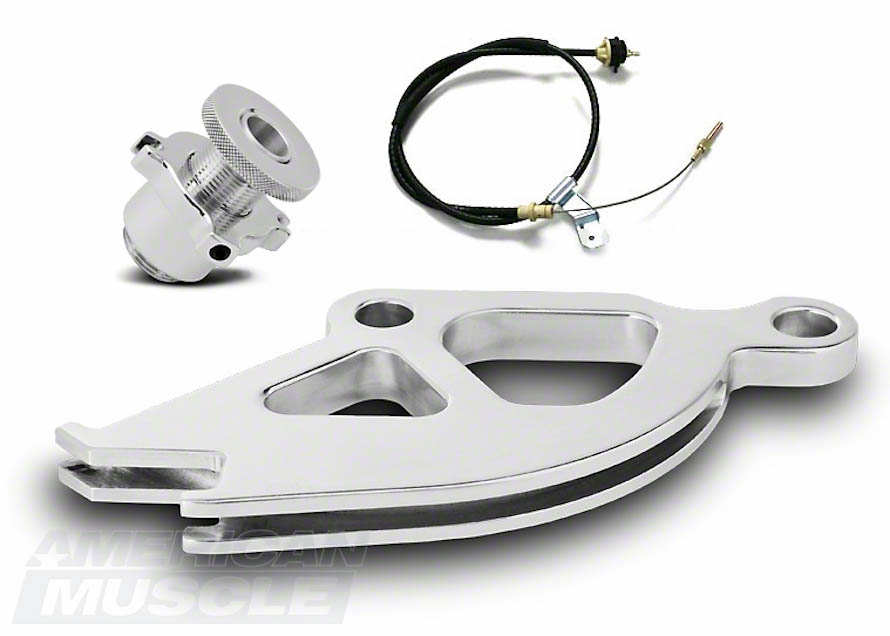
Clutch Adjuster Kit for 1996-2004 Mustangs
Clutches and flywheels are very important components of any manual transmission Mustang; it’s where the engine starts to put the power to the wheels. When accessorized correctly, you can take full advantage of the clutch and use all of its potential gripping power. When upgrading your system, another option would be a hydraulic clutch conversion.
This would replace the traditional cable system with a modern hydraulic linkage for a smoother and more manageable clutch operation. Upgrading your flywheel or other clutch accessories, such as the adjustable clutch cable, clutch quadrant, or a firewall adjuster will give you the adjustability you’ll want and need.
What Mustang Flywheel is Best for My Driving Style?
If your Mustang spends most of its miles running around on the street, resurfacing the stock flywheel or installing a steel flywheel will give you the most consistent and predictable driving.
The heavier weights of these two flywheels will make it easier for you to get to your desired RPM without overshooting, and will help to prevent stalling. Do you spend a lot of time flogging your pony at the track? Does it rarely see street use?
Then a super lightweight aluminum flywheel would be best for you! One thing I would recommend to all Mustang owners, is to make sure that you always install a flywheel with a clean surface when installing a new clutch!
Differences Between Foxbody Flywheels
The big difference between the 1979-1985 generation clutch and 1986-1993 clutch is size. 1979-1985 Foxbody Mustangs used a 10-inch, 10-spline, 1-1/16 input shaft organic disc and the later 1986-1993 T5 based models upgraded to a 10.5-inch disc with matching flywheel.
The larger 10.5-inch disc has greater surface area thereby providing more grip and holding capacity. Upgrading an older 10-inch SROD or T5 manual Foxbody to the larger 10.5-inch is easy – just get a new 10.5-inch clutch with matching flywheel and new bolts and it will fit right on with no issue.
Starter Teeth
Flywheels also have a toothed ring around the outside edge. The starter bendix engages these teeth when you start the car, and it turns the engine over to get it started. If you are installing a starter with a different number of teeth on it, you may be required to install a different flywheel to ensure proper operation.
This is fairly uncommon, but it is always wise to double check before replacing your starter. You will also want to confirm that your replacement flywheel has the same number of teeth as a stock flywheel does.
Fitment includes: 1999, 2000, 2001, 2002, 2003, 2004, GT, V6, Cobra, Mach1, Bullitt, 1979, 1980, 1981, 1982, 1983, 1984, 1985, 1986, 1987, 1988, 1989, 1990, 1991, 1992, 1993, 1994, 1995, 1996, 1997, 1998, 2005, 2006, 2007, 2008, 2009, 2010, 2011, 2012, 2013, 2014, 2015, 2016, 2017, ShelbyGT500, Boss, LX, EcoBoost


